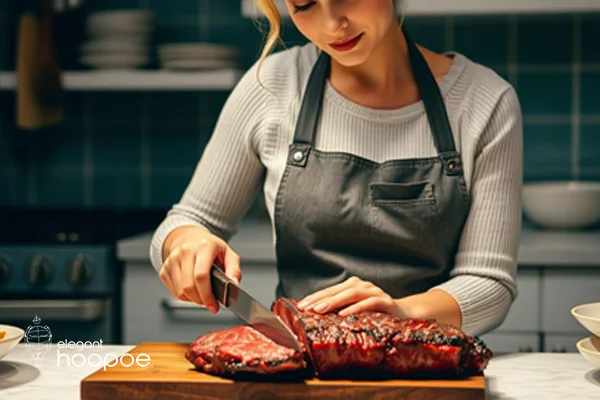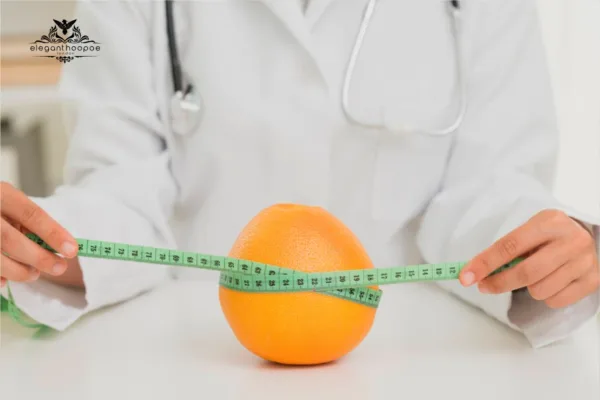What Can You Eat on the Carnivore Diet? A Complete Food List & Guide
The carnivore diet consists exclusively of animal-based foods, eliminating all plant-based items. Here’s what you can eat:
- Meat: Beef, pork, chicken, lamb, venison, bison, organ meats, and even exotic meats like kangaroo.
- Seafood: Salmon, tuna, shrimp, oysters, crab, and squid.
- Dairy: Eggs, butter, cheese, and full-fat yogurt (for less strict versions).
- Drinks: Water and bone broth; green tea and coffee for intermediate versions.
This diet promotes weight loss and satiety by cutting carbs and increasing protein intake, but it may lack essential micronutrients for long-term health.
The carnivore diet, which was almost non-existent in everyday conversations a few years ago, now has an active base of growing followers around the world, with endorsements from Joe Rogan and several social media ‘meat-fluencers’. In this article, we examine the diet, its food options, and safety concerns and provide an easy-to-follow guide to begin the diet.
What is the carnivore diet?

The carnivore diet is a highly restrictive diet that involves the consumption of only or mostly animal-based foods like meat, seafood, eggs, and dairy at the expense of plant-based foods. It is in direct contrast to the vegetarian diet, and focuses on eliminating or significantly reducing carbohydrate intake.
The carnivore diet can be divided into two main categories, based on the extent to which carbohydrates are reduced.
- Full or hardcore carnivore diet – this is the strictest version of the carnivore diet (~100% zero carbs restrictive) where only animal meats and fats are eaten
- The intermediate carnivore diet – a more lenient version of the carnivore diet where low-carb dairy products (and other low-carb products) are included in the menu.
The carnivore diet is thought to promote weight loss and regulate mood swings.
The biochemistry behind the carnivore diet and weight loss
The human body needs energy to survive, and in a balanced diet, carbohydrates contribute the predominant amount of this energy. In the absence of carbohydrates (as in the hardcore carnivore diet), the body will turn to fat, converting it to ketones to use as its energy source. This alternative energy sequence directly leads to the burning of more fat and subsequent weight loss.
Moreover, the high protein content in the carnivore diet promotes satiety within and after meals, which reduces overconsumption or binge eating habits. Proteins also enhance lean muscle mass, which is metabolically more active than fat muscle mass and leads to the burning of even more calories.
Related article Signs of Losing Muscle Mass
What can you eat on the carnivore diet?

A simple rule of thumb to follow when deciding what should and shouldn’t be on a carnivore diet is this: so long as it walks, swims, or flies, it can be eaten! We’d briefly consider the food and beverage options on this diet.
Meat options
As it is a predominantly ‘meat-only menu’, the carnivore diet has a variety of meat options, including:
- Beef cuts (ribs, flanks, top rumps, briskets, chucks, etc.)
- Pork chops
- Chicken
- Bone marrow
- Organ meat
- Lamb chops
- Turkey legs
- Kangaroo steaks
- Ostrich
- Venison
- Bison
- Moose
- Bacon
Pro tip: Preparing your meat medium-rare optimally cooks it and helps you to maximize its protein content.
See also The 80-20 Diet rule
Seafood options
Seafood adds variety to the carnivore diet and may help you remain ‘compliant’ when regular meat inevitably becomes boring. Fish and fish oil also digest relatively more quickly than meat, providing a viable option for pre-exercise meals and energy boosters while on the carnivore diet. Some seafood options are shrimps, squids, lobsters, oysters, crabs, salmon, tuna and scallops.
See also Sirtfood Diet for Weight Loss
Diary options
Dairy products are also allowed on the carnivore diet, although some food groups may not be suitable for those with high food intolerance. Eggs (chicken eggs, duck eggs, or turkey eggs), milk, cheese, yogurt, and butter are all good options while on the carnivore diet.
Pro tip:
- Food safety is particularly important in this diet, and you should ALWAYS be willing to put in the extra yard to obtain high-quality proteins with excellent nutritional profiles. With this in mind, we advise that you prioritize organic eggs, which are healthier and have several nutritional benefits, over mass-produced ‘laboratory’ eggs, which are largely experimental.
- Skim milk, low-fat cheese, margarine, or other butter substitutes have high amounts of carbohydrates and are technically not a part of the full carnivore diet. Clarified butter (ghee) or fat tallows are more compliant alternatives to margarine.
Related article: Pescatarian Diet for Weight Loss
Seasoning options
Salt is the only carnivore diet-compliant seasoning since most other spices or seasonings are derived from plant-based leaves and seeds. However, there is room for flexibility with seasonings, and a small amount of pepper is allowed in this diet.
Snack options
Processed foods are an absolute no-no in the carnivore diet, which means eating ‘snacks’ will require some creativity on your part. Your meat options can be ‘converted’ to sausages (pork sausages are particularly tasty) while seafood can also be smoked ahead to double as a snack. Dairy products like cheese and eggs can also be used as snacks.

What can you drink on the carnivore diet?
The carnivore diet requires a lot of water intake, with meals and in between meals. Even more so if you exercise a lot.
Another carnivore diet-compliant drink that is highly beneficial is bone broth. Boiled from animal bone marrow or obtained as a supplement, bone broth has several important micronutrients and is also full of collagen, which plays an important role in skin health and the health of connective tissues. Green tea and caffeine may also be included in the intermediate carnivore diet.
Related article: Liquid Diet For Weight Loss
What you cannot eat/drink on the carnivore diet
- Processed meats like Salami and beef jerky or canned animal foods should be avoided while on this diet, because of the high additive content
- Meat sauces are typically high in carbs and are excluded from the full carnivore diet.
- Juices, sodas, and alcohol are excluded from the full carnivore diet because of their high amount of carbs and sugar content.
- Nuts and seeds may have an important role in a balanced diet but do not fall within the confines of the full carnivore diet.
- Pasta and rice are plant-based foods and high in carbs. They should be weaned off your diet before starting a carnivore-based diet.
Steps to start the carnivore diet

There are four main steps to starting the carnivore diet
- Consult a doctor or a dietician to get an expert opinion on whether the carnivore diet is suitable for your goals or compatible with your health.
- Establish supply contacts, perhaps online or with hunting clubs, local butchers, farmer’s markets, and supermarkets
- Remove plant-based foods from your storage or refrigerator
- Purchase your initial supplies and follow diet plans and recipes to ensure you’re getting as much nutrients as you can from the diet.
What do you know about Dukan Diet for Weight Loss
Merits and demerits of the carnivore diet
A lot of the merits and demerits of the carnivore diet are mostly conjectured or based on limited research/ research where the results are ‘decidedly convenient’. This is a shame because the diet is gaining increasing popularity and well-balanced research is urgently needed to clarify its nutritional standing.
Merits
The high-fat content of the carnivore diet provides important fatty acids, which the body cannot produce otherwise, and also aids in the absorption of vitamins A, D, and E. The diet is also thought to improve autoimmune issues, enhance BMI (a natural consequence of weight loss), provide more energy and strength (a natural consequence of the high proteins), regulate moods, and improve memory. These claims have, however, not been extensively verified with long-term trial studies.
[calculate_Body Mass index]
Demerits
The demerits of the carnivore diet are more substantiated and lay in the absence of beneficial nutrients like fibers vis-à-vis the presence of high saturated fats and sodium. Lack of fiber can negatively affect your bowel movement, potentially leading to constipation, diarrhea, and loose stooling.
Furthermore, processed meats have high amounts of unsaturated fat, which can raise the levels of bad cholesterol and exacerbate the risks of stroke and cardiovascular diseases. Processed meats also contain high sodium content, which, besides being linked to certain forms of cancer, can increase blood pressure and lead to kidney diseases.
Also, the high protein content in the full carnivore diet, when consumed consistently, may be too taxing for the livers and kidneys and may increase the risk of gut inflammation.
Patients suffering from diabetes, kidney disease, heart disease, or high blood pressure should avoid the diet because of the high saturated fats and sodium.
Carnivore diet conclusion
The carnivore diet, despite its obvious appeal, is not suitable for a great segment of the population, including children, pregnant women, and nursing mothers. It does not align with the dietary guidelines in Dubai or the USA, nor does it have sufficient micronutrients, vitamins, and antioxidants that justify its weight loss benefits in the long term.
And although you can use supplements to make up for the vitamin and mineral shortfalls, the carnivore diet is simply not sustainable for a long period. Unless recommended by a certified dietician, the ‘boring’ balanced diet remains your best bet.
Why Elegant Hoopoe
Elegant Hoopoe is a health and aesthetics center in Dubai specializing in non-invasive fat reduction, nutrition tips, muscle building, skin appearance, and more. The company has certified dieticians that provide expert dietary consultations and rich diet plans/recipes for a wide range of diets.





